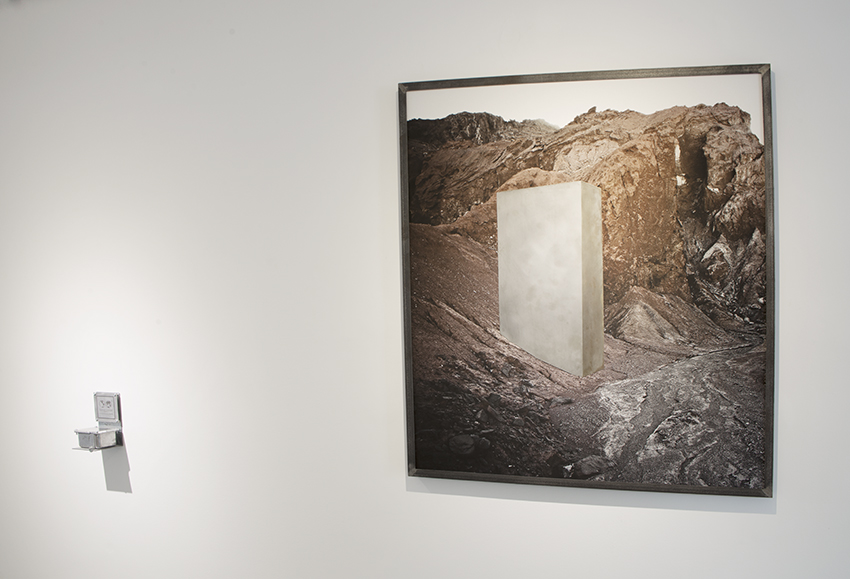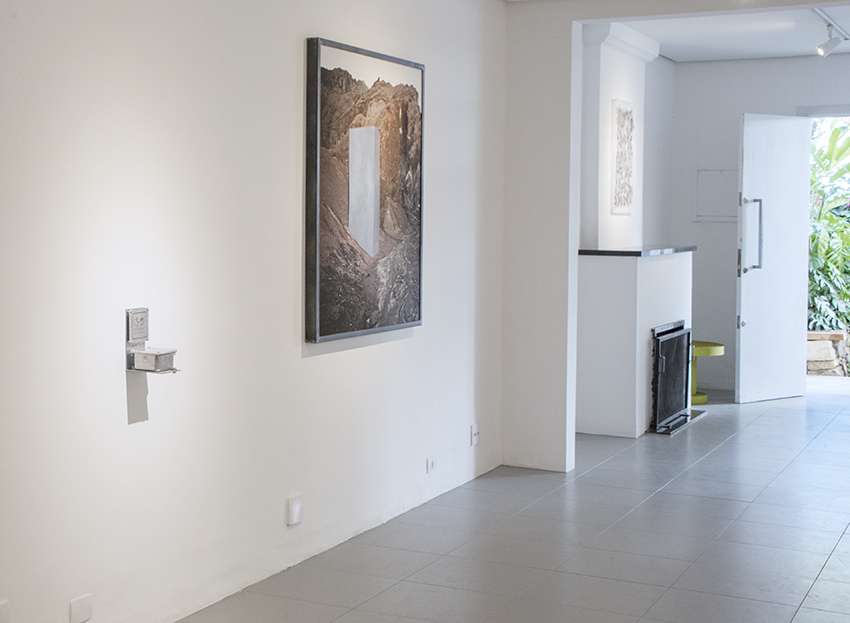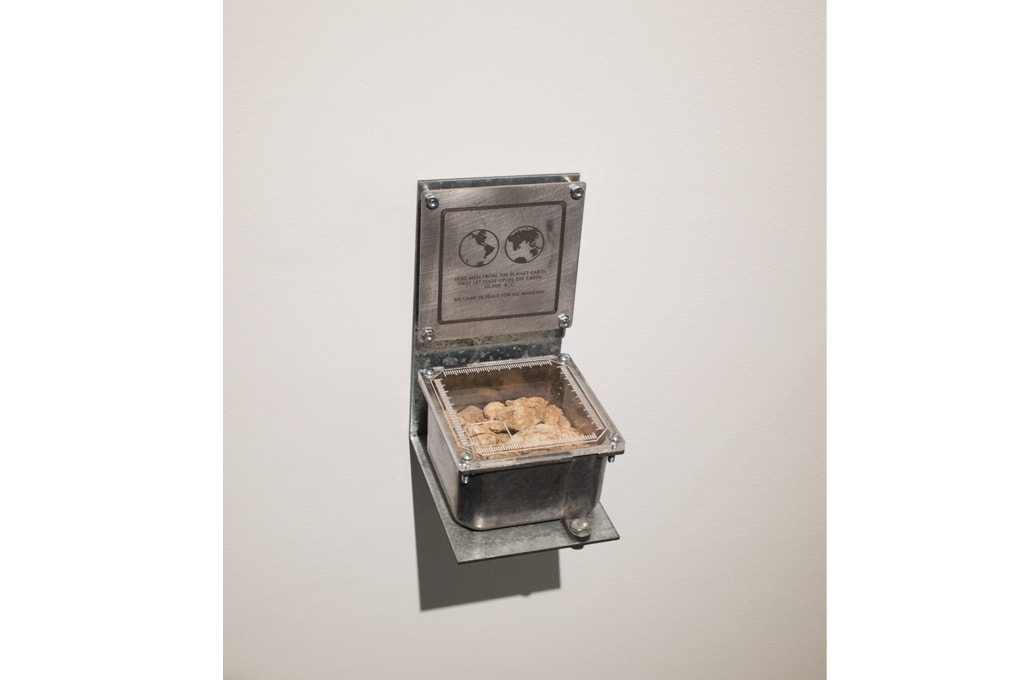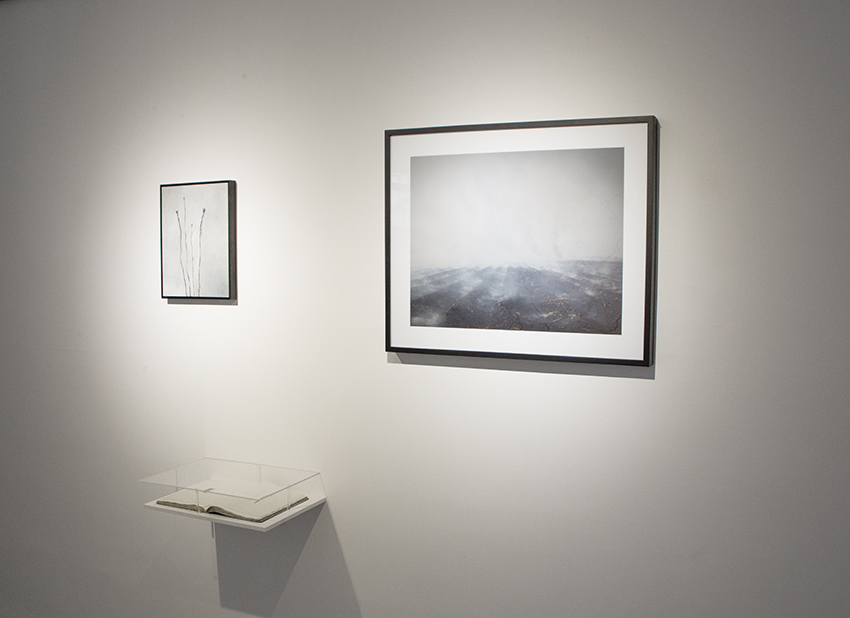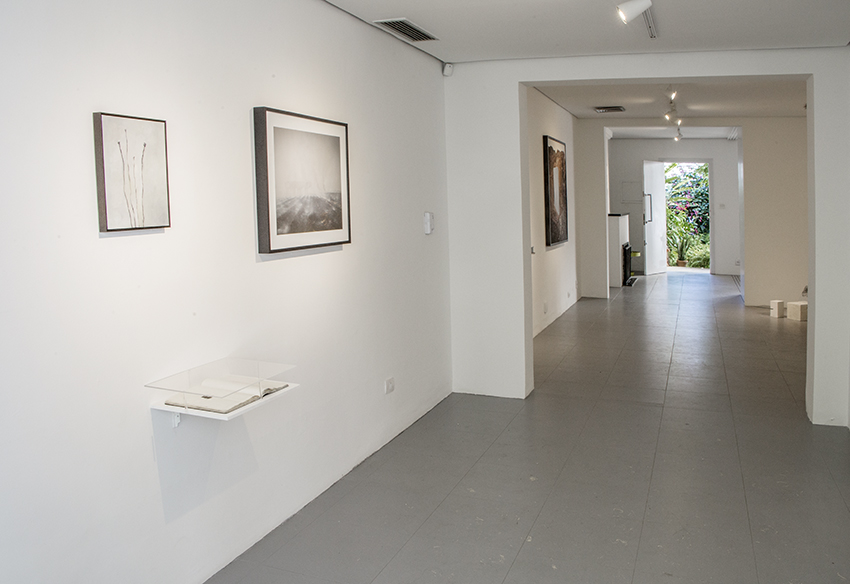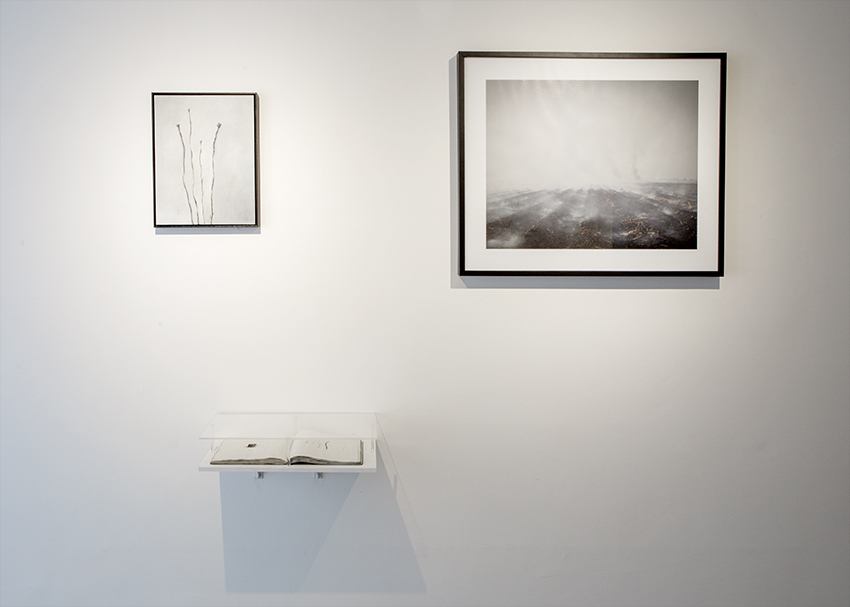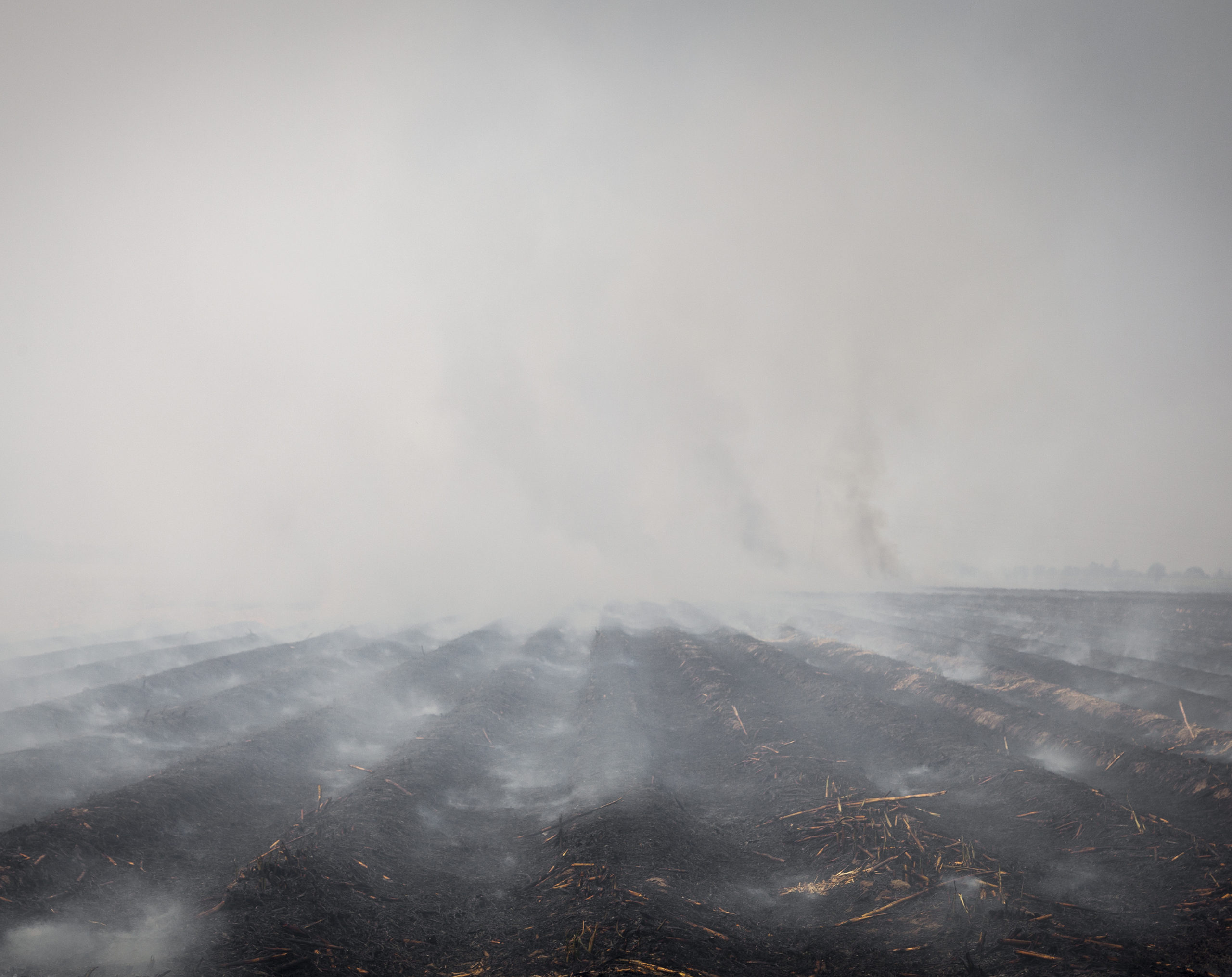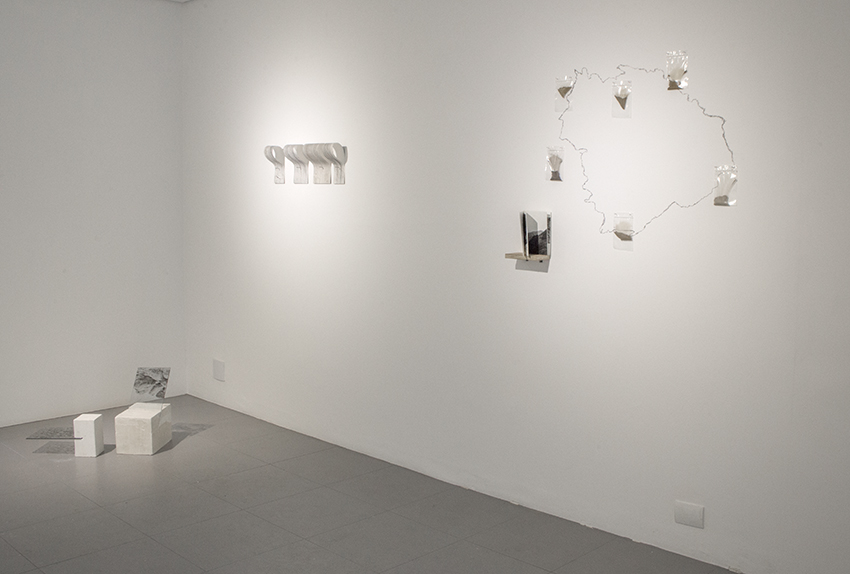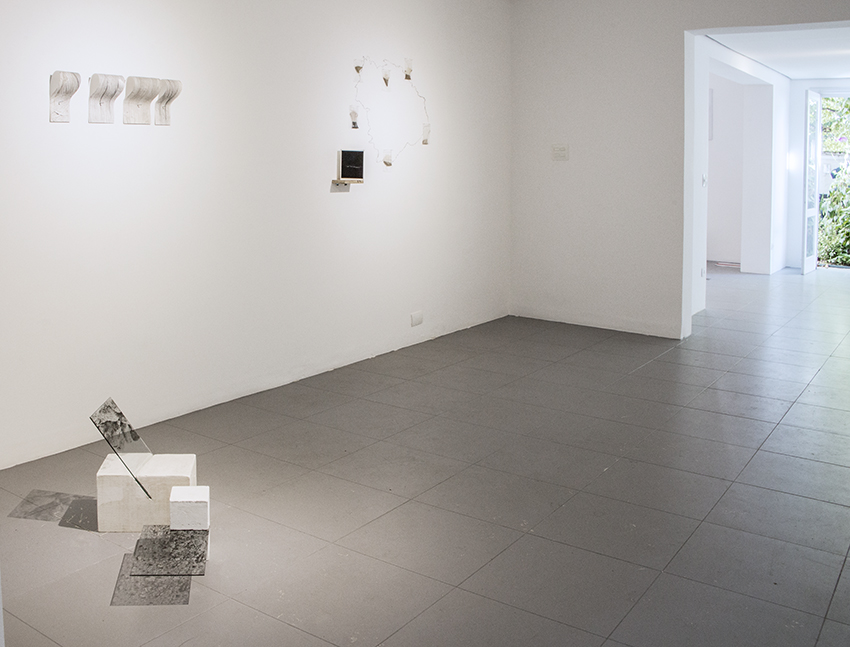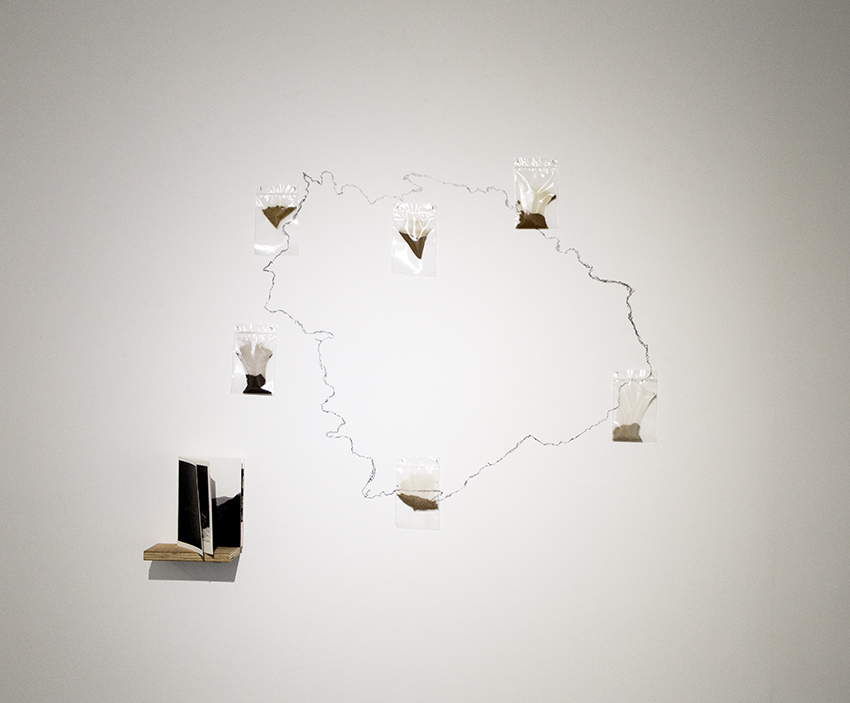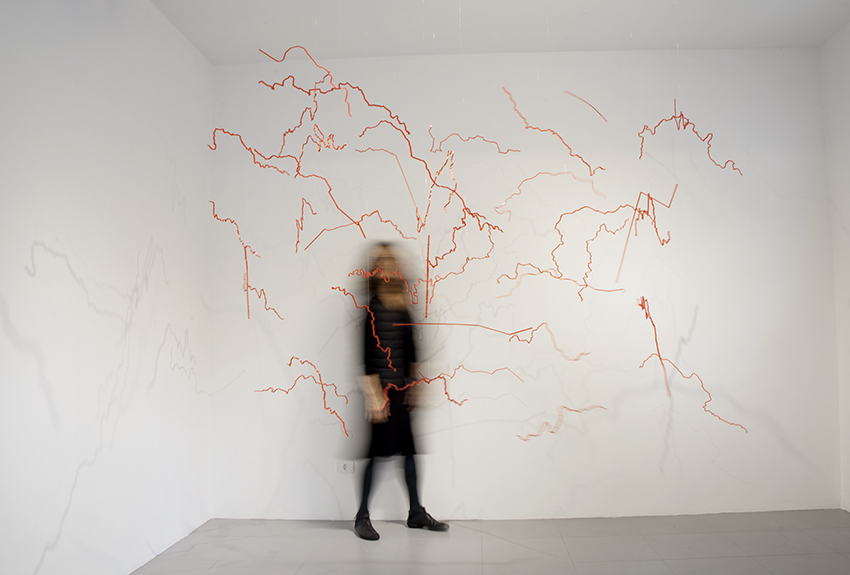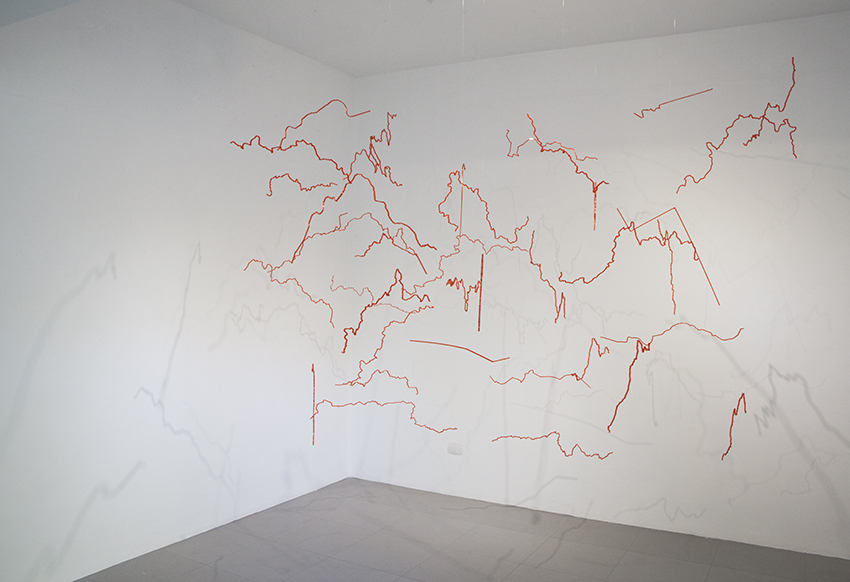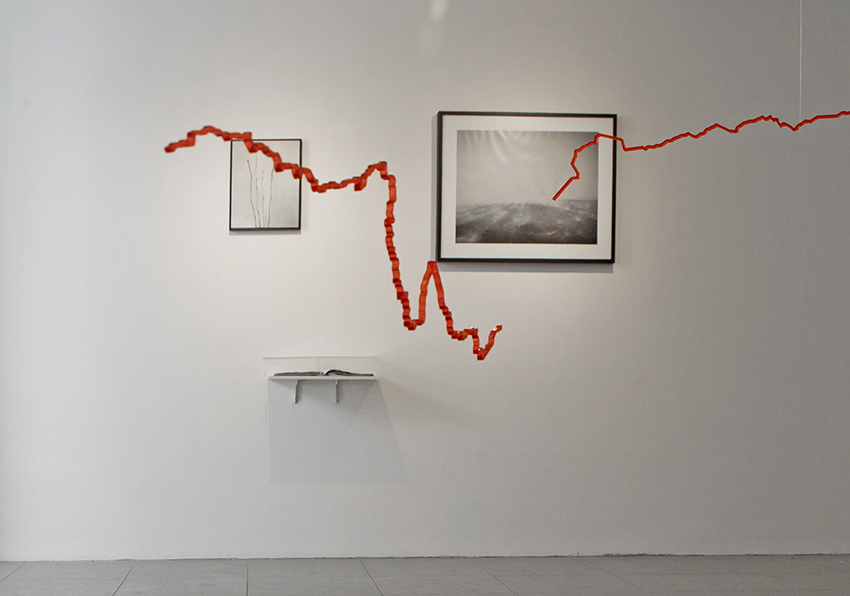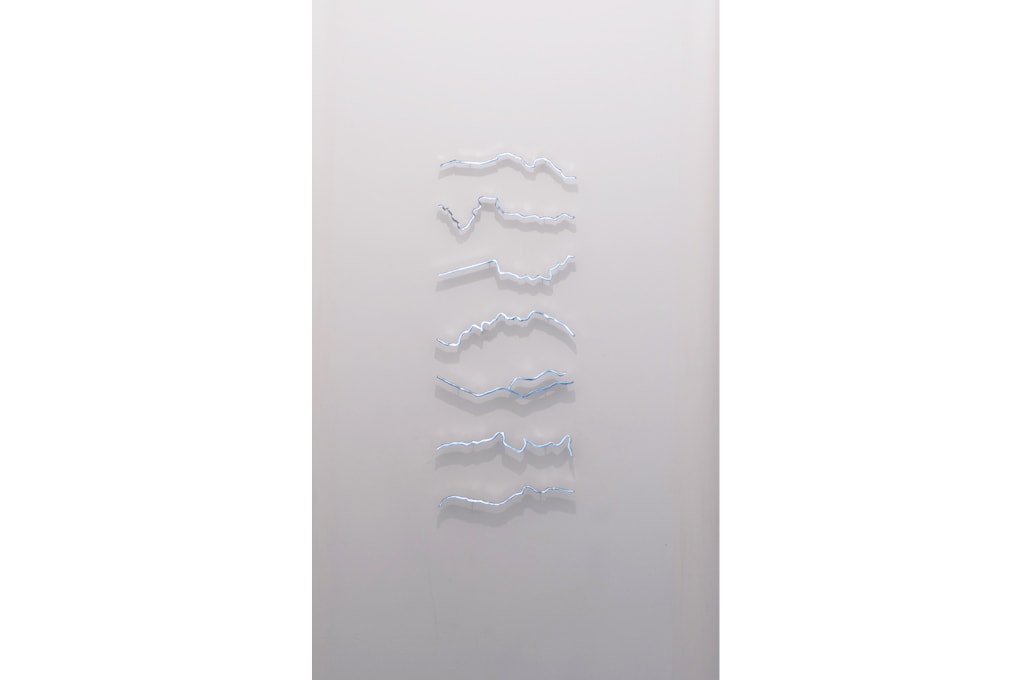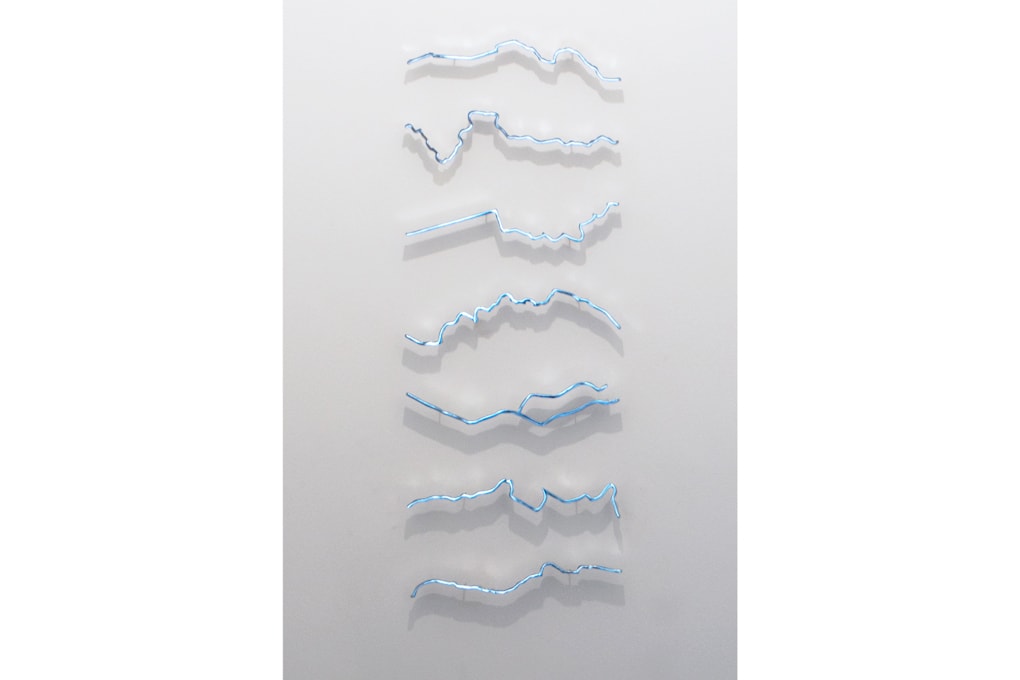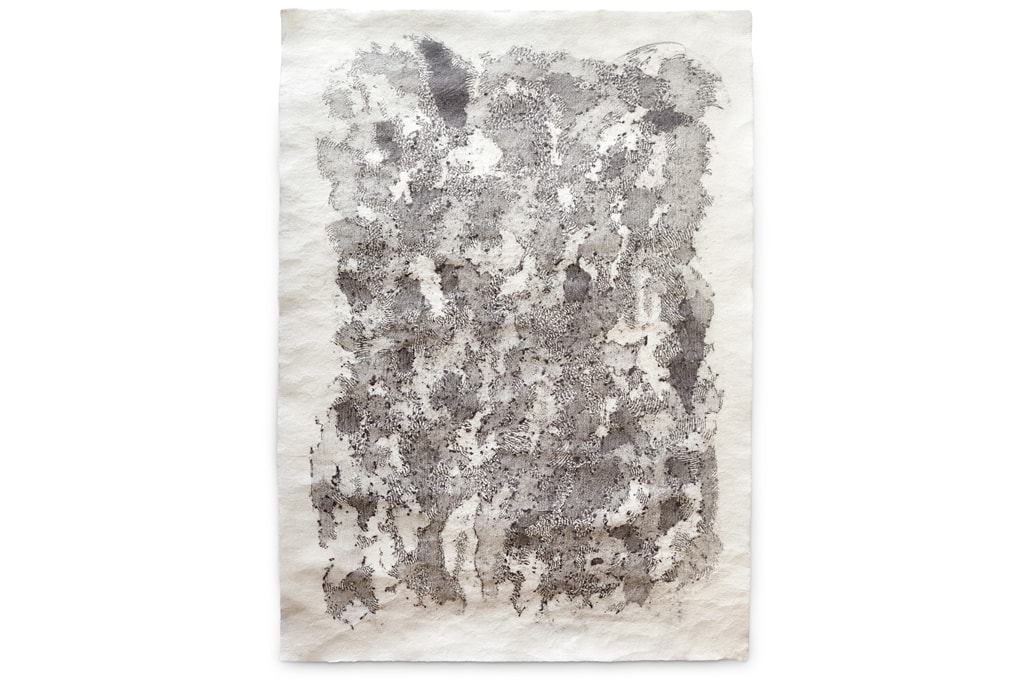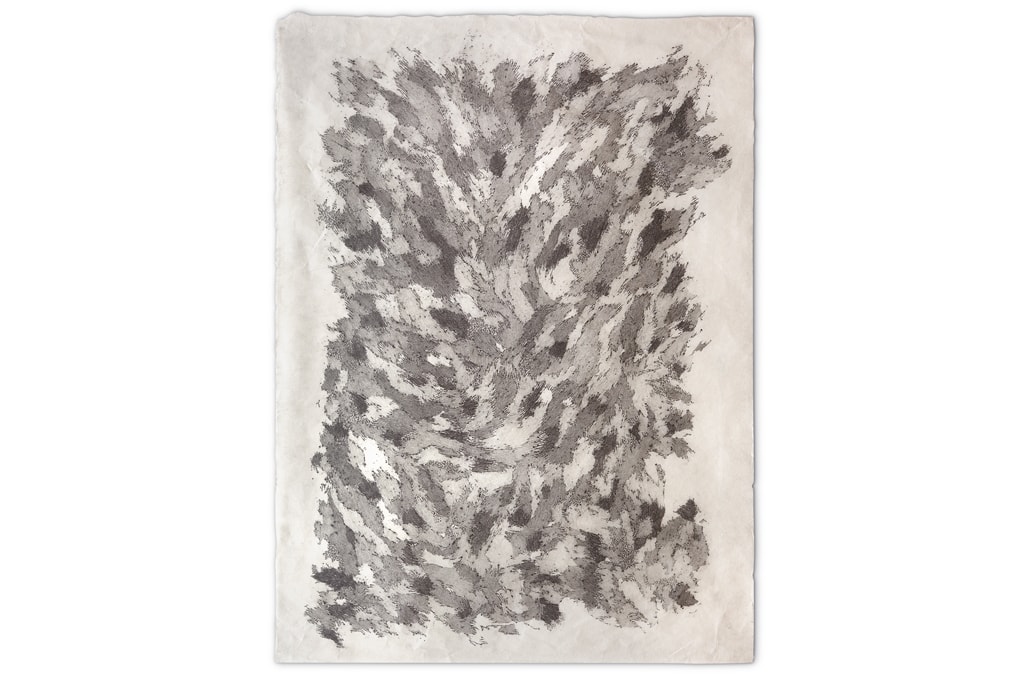“Intermittent Topographies”
Artists: Beto Shwafaty, Carolina Zancolli, Mariana Sissia, Marcelo Moscheta, Renata de Bonis, Renata Padovan, Santiago Porter, Sol Pochat and Samuel Lasso
Curator: Thais Gouveia
“There will be no real response to the ecological crisis except on a planetary scale and with the condition that an authentic political, social and cultural revolution be conducted, reorienting the objectives of the production of material and immaterial goods.” (Félix Guattari)
“Let us remain exposed, and let us think about what is happening to us.” (Jean Luc Nancy)
According to Dutch chemist Paul Crutzen (Nobel Prize winner in 1995 for his studies on the ozone layer) we are entering a new geological era: the Anthropocene Age, in which humans and their intense technical-scientific transformations replaced nature as the force environmental impact on Earth. Researchers have found a number of clues to support this assertion: rising planet temperatures by 1 ° C, permanent changes in river flows across all the world’s river basins, land drilling in oil wells, and massive destruction of forest reserves are just a few of them.
The present exhibition proposes to study ways in which ecological and political thinking emerged poetically in the works of nine artists from Argentina and Brazil. Giving priority to the universal aspects of this theme, the proposal is to open the way for the ensemble to bring a poetic understanding of the environmental transformations arising from our current way of conceiving reality, which the French philosopher Gilles Lipovetsky defined as “world culture.” This term refers to a virtual dissemination on a global scale of a series of practices and ways of life such as extreme faith in science, technological domination of nature, mirage of unlimited progress, market logic, hyperindividualism, consumption and hypermidia.
A process that has generated a myriad of problems such as numerous environmental disasters, mass extinctions, economic crises, wars, nuclear weapons, major migrations, the rise of nationalism and the subsequent closure of borders. When the media and cyberspace become the primary mediators of our relationship with the world, what sets in is an illusory absence of limits, an immediacy and a great distance from finite material reality, generating disorientation and even denial of life itself, and its natural stages of beginning, middle and end (1). This detachment from local phenomena in order to grasp the global scale has meant that we could neither achieve this world conception nor evolve in our perception of our surroundings and the other.
“A mental illness has invaded the planet, it is banality” (Yornel J. Mártinez Elías)
What is lacking then to reintegrate ecological and geographical intensities into artistic, scientific, ethnographic, economic, and philosophical practice? A starting point, according to the philosopher and scholar Felix Guattari, would be to review the social ecologies that also undergo serious deteriorations.
There is a crisis in subjectivity – be it social, animal or vegetable – and the subsequent loss of its texture with the environment and of any otherness. The exit from this crisis, according to the thinker, would be to raise the reflections beyond the technocratic perspective, being the aesthetic-ethical-political articulation between environment, social relations and human subjectivity – that he named “ecosofia” – the key to reintegrate form all these aspects. (2)
Could art play an active role in reversing these crises? How to transform passivity into activism and reintegrate artistic action into natural flows? It is not a question here of thinking of art as a generator of solutions to environmental damage, but as a practice that can – by acting on the threshold and in the crevices of things and individual perceptions – offer new points of view and thus transform our way of thinking and produce knowledge. Rancière argues that “the existence of events that surpass the thinkable one calls for an art that witnesses the unthinkable.”
According to the latter, it would be proper for art to inscribe in our understanding the trace of this unthinkable, those possible layers of the world that we still can not conceive, “making us see” cartographies hitherto invisible. A “seeing” that acts here under the artistic will to appropriate this landscape and which, inevitably, must operate within a reduction and discontinuity of this landscape-world. And it is precisely this artistic will – through decals, drawings, inks, folds, chronological measurements and geometries – that burst into space new topographical formations. And, perhaps, new geographies within those who see them.
The exhibition is the result of a two-month curatorial residence that the curators did in Buenos Aires in 2016, as part of C.Lab Mercosur Award.
ACKNOWLEDGMENTS: HILO GALERIA, BLAU PROJECTS, LUISA STRINA GALLERY, BFA BOATOS GALLERY, RED GALLERY AND ROLF ART.
BIBLIOGRAPHIC REFERENCES
(1) LIPOVETSKY, GILLES; SERROY, JEAN. WORLD CULTURE: RESPONSE TO A DISORIENTED SOCIETY. TRANSLATION BY MARIA LÚCIA MACHADO. SÃO PAULO: COMPANHIA DAS LETRAS, 2008.
(2) GUATTARI, FÉLIX. THE THREE ECOLOGIES. TRANSLATION BY MARIA CRISTINA F. BITTENCOURT. 11 ED. CAMPINAS: PAPIRUS, 2001.
(3) RANCIÈRE, JACQUES. THE DESTINATION OF IMAGES. TRANSLATION OF COSTA NETO MÓNICA. SÃO PAULO: CONTRAPONTO, 2012.
Exhibition:
March 4 to April 8, 2017 – Hilo Gallery (Buenos Aires)
May 13 to July 8, 2017 – Casa Nova (São Paulo)




